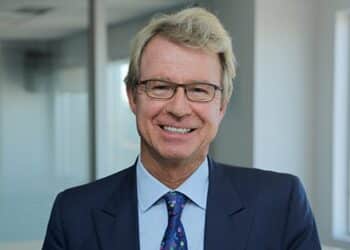The benchmark S&P/ASX 200 index closed at a record 8,603 points on Friday, capping a strong week with a 0.08 per cent gain.
Despite simmering geopolitical tensions and signs of global growth fatigue, the market appears to have found new legs, buoyed by the growing prospect of interest rate cuts.
Jason Todd, CEO and chief investment officer (CIO) of Ten Cap, said the combination of policy tailwinds, stabilising inflation, and an improving earnings picture could see the local equity market extend gains into year-end.
“We think the Australian equity market will grind its way higher through year-end and has the potential to finish with mid ‘teen’ returns,” Todd said. “This will be driven by a combination of earnings upside as well as multiple expansion – particularly in the commodity and laggard cyclical-related areas.”
While investors have had to navigate a flurry of global risks – from escalating Middle East tensions to renewed concerns about US fiscal discipline – Todd believes markets are increasingly adept at processing and compartmentalising these shocks.
“The equity market is approaching and pricing in policy and/or geopolitical risks through an isolation lens. The initial reaction is negative, but the market is quickly filtering and then calibrating these risks with price stability emerging relatively quickly,” he said.
“We have seen this with concerns around US fiscal spending which drove a short spike in bond yields and then more recently with the escalation in Middle East tensions between Israel and Iran.”
Todd argued that Australia is currently benefiting from an unusual position of relative strength – at least compared to the US, where persistent inflation and political dysfunction are weighing on sentiment.
“It is not often that Australia is a relative safe haven when the US is softening. But the US is kicking own goals and outside of a recession, we think Australia can avoid the worst of these drags,” he said.
And while equity valuations remain elevated by historical standards, Todd doesn’t see this as a meaningful barrier.
“We have repeatedly argued that [valuations] are not a constraint to the domestic equity market trading higher, particularly when cyclical tailwinds are building.”
A key driver of optimism is the Reserve Bank of Australia, which is expected to continue on the path of monetary easing. Todd pointed to May’s softer-than-expected consumer price index data, which has bolstered expectations for further rate cuts – starting this Tuesday.
“If neutral is around 3.00 per cent and rates are currently at 3.85 per cent, then we think households should expect at least another 100 bps of easing but likely more if rates need to fall back into an easy setting,” he said.
He added that if the real neutral rate remains close to zero – as some economists argue – the RBA could cut by as much as 125 to 150 basis points.
“That would certainly fire up the domestic equity market,” he said.
On the earnings front, Todd said the worst appears to be behind investors, with earnings revisions and growth momentum beginning to improve.
“We think ~10 per cent eps growth for the industrial universe is achievable off the back of modest margin gains which should again see a strong divergence in equity gains for cyclical versus non-cyclical stocks,” he said.
“In addition, outside of a recession, we think the resource sector is not far off cyclical earnings lows and this offers upside potential for the broader earnings backdrop against tepid growth for the banks.”
Despite the uncertain global backdrop, Todd said investor appetite to reweight towards equities remains strong.
“Ultimately, the desire to reposition and add to equity allocations appears strong, with Australia remaining well-insulated from global trade concerns,” he said.






